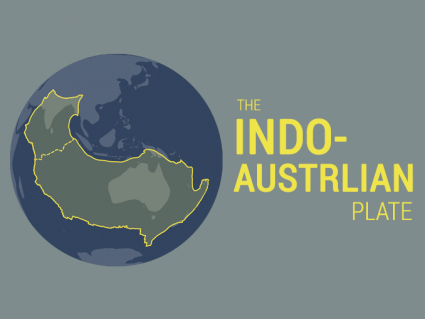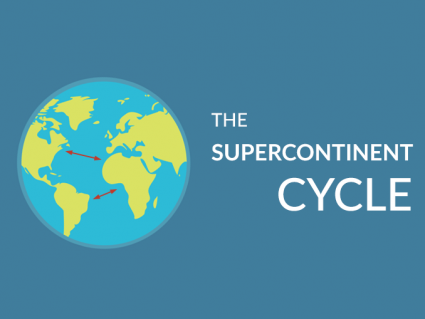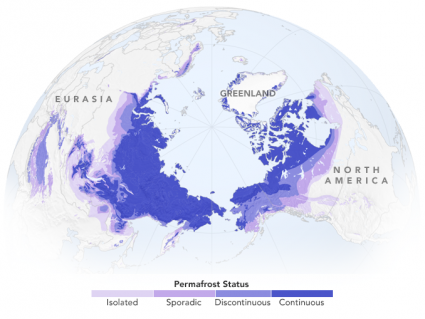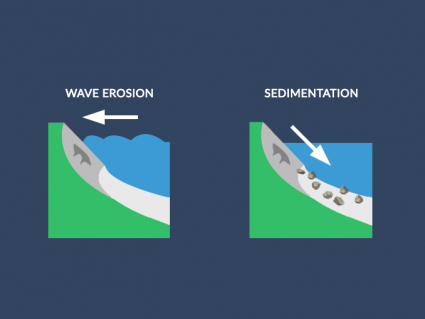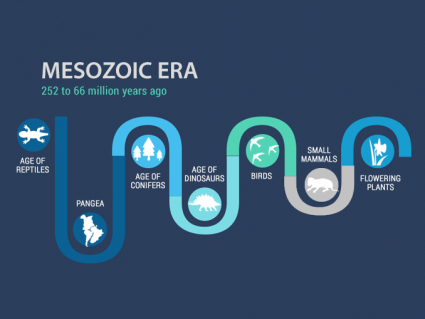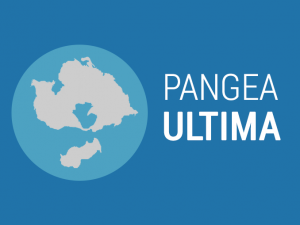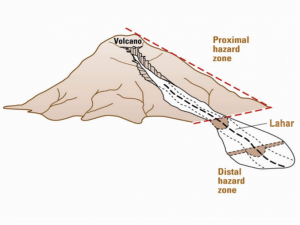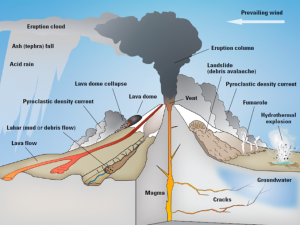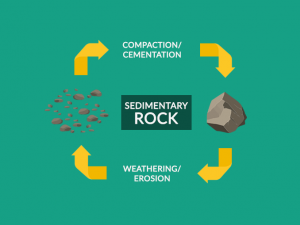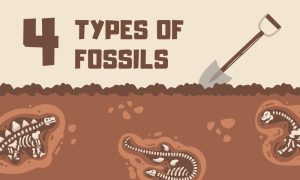Continental Drift: A Tale of Moving Continents and Plate Tectonics
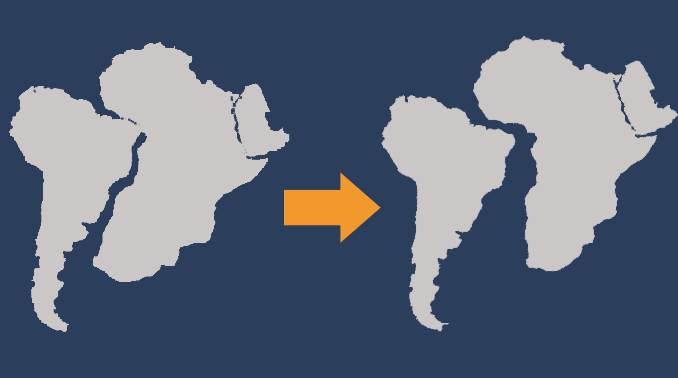
DEFINITION:
Continental drift is the theory that Earth’s continents have moved over time and were once joined together in a single landmass called Pangaea.
Imagine you are a delivery driver asked to ship a parcel from New York to Africa.
But the catch is:
You own a time-travel machine that can transport you millions of years in the past.
So the question is:
If you could time travel to the past, how many years in the past would get you the closest distance from New York to Africa?
Because, if you’re going to deliver a parcel with a time travel machine, you want the year when these two continents were closest.
We’ll get back to our delivery in just a second. But first, let’s talk about continental drift.
What is continental drift?

Continental drift is the idea that continents passively move due to the movement of plate tectonics. Like a conveyor belt, continents ride on a plasticky layer known as the asthenosphere.
We know continents move because we use GPS sensors to track their movements. We’ve calculated that continents move about 5-10 cm per year on average. So this is about the same length your fingernails grow every year.
Now, let’s think in geological time:
Instead of just years, how far have continents moved over millions of years? Because when you think of Earth in a geologic time scale, continents have traveled thousands of kilometers. Because of convection in the mantle, we can accredit our constantly realigning continents.
250 million years ago in the Permian Period
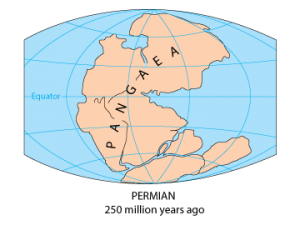
In the Permian period, there was just one continent. And one ocean.
- PANGEA: If you had a time capsule and traveled back in time 250 million years ago, you’d experience Earth as the supercontinent of Pangaea.
From coast to coast, Pangaea was surrounded by the superocean Panthalassa. Gradually, continental drift tore the supercontinent apart into separate continents.
200 million years ago in the Triassic Period
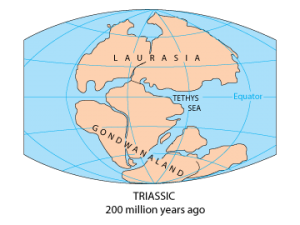
Let’s rewind 200 million years. Humans didn’t exist. Instead, dinosaurs dominated the land.
If you travel back to the Triassic period, two enormous-sized continents have meshed together.
- LAURASIA: Laurasia is comprised of today’s North America, Europe, Greenland, and Asia in the north.
- GONDWANA: Gondwana was pieced together with present-day Africa, South America, Australia, and Antarctica.
And smack dab in between the two landmasses was the Tethys Sea.
145 million years ago in the Jurassic Period
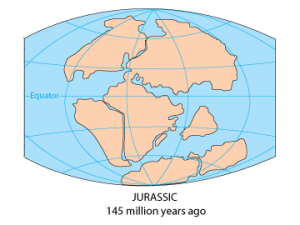
About 145 million years ago, oceans began taking shape. Because of the movement of continents, it opened the path for oceans to fill in the separation of continents
As continents drifted away from each other, Pangaea became less recognizable after each millennium.
This is because our present-day map was starting to take shape due to continental drift. Over time, dinosaurs become extinct. Today, we uncover their fossils.
At one time, they lived on the connected Pangaea. Now, we piece together where land was connected from the fossils we discover.
65 million years ago in the Cretaceous Period
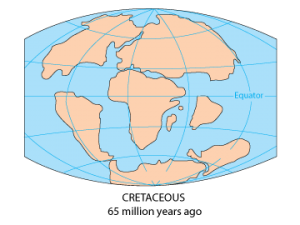
In the Cretaceous period, present-day geography has become more distinguishable.
All of a sudden, the world map starts to resemble something we are all familiar with. But it’s not quite there just yet.
For example, we have a clear division between Europe and North America.
But the Atlantic Ocean needed to expand just a little more for it to be our modern placement of continents.
What does Earth look like in the present day?
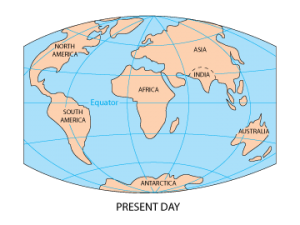
This is the present-day Earth that we see on a world map. It has 7 continents and 5 oceans.
It took a long time for continental drift to mold the planet. This is why the geological time scale is of vital importance.
Today, we pick up the pieces and look at the clues of Pangaea.
For example, notice the striking similarities of continental boundaries aligning on a world map.
We also have strong evidence of Pangaea because we find fossils from the Pangaea Supercontinent from animals that couldn’t swim or fly.
What will continents look like in the future?

About 250 million years ago, there was just one massive chunk of land known as Pangaea. If you look at a world map, you can still piece together our continents like a giant jigsaw puzzle and recreate Pangaea.
Over millions of years, plate tectonics has torn apart Pangaea creating distinct continents and oceans. Plate tectonics are always moving. But they’re deceptively slow.
The land we live on never stays still. We know they passively move because GPS satellites measure their slight movements.
- PANGEA ULTIMA: Plate tectonics have carved out 7 distinct continents and 5 oceans where we live today. Eventually, continental drift will assemble another supercontinent called Pangea Ultima.
Back to our delivery driver…
If you were in the Permian Period, it would be a short delivery from New York to Africa.
You wouldn’t even need a boat or airplane. That’s because New York and Africa were connected at this time.
So what would you set your time machine to for the quickest delivery?
If you set your time machine to 250 million years in the past, you’d be a stone’s throw away to deliver your parcel from New York to Africa.
What is Continental Drift?
Continental drift is the movement of continents on Earth. It’s caused by convection currents that are generated by temperature differences between the surface and the deep ocean.
This process helps to make new land, as well as move landmass around on the planet’s surface.
Otherwise, you can use the comment form below or email us with your questions and comments.

